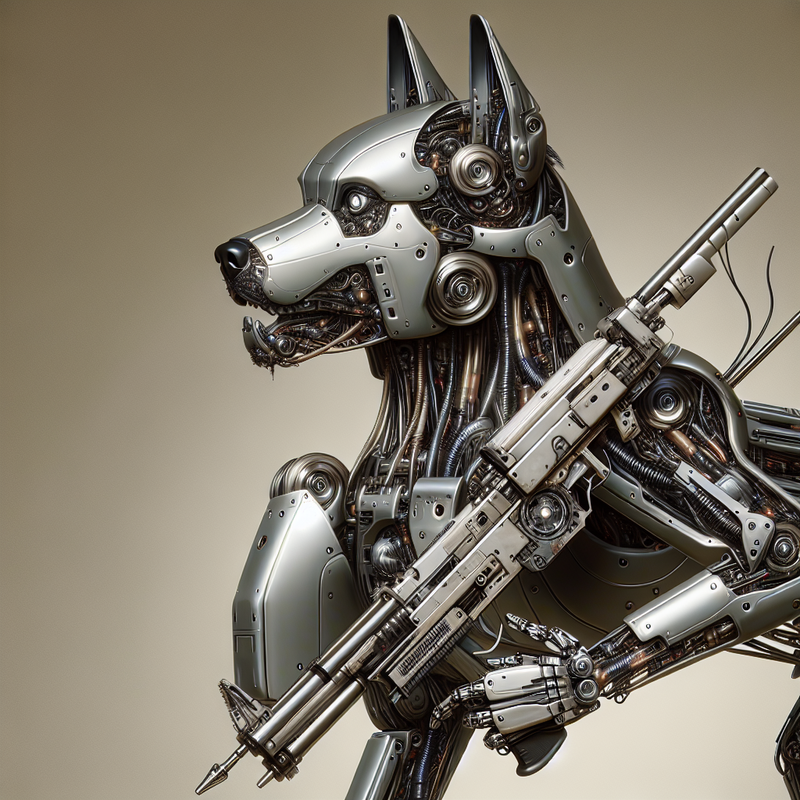The Marine Special Operations Command of the United States (MARSOC)
is in the process of assessing the use of four-legged automated robotic units, commonly referred to as “robotic dogs“. These sophisticated mechanisms, a product of Ghost Robotics’ engineering, are on the verge of being outfitted with AI-driven firearms supplied by defense innovator Onyx Industries.
Known as Q-UGVs (Quadrupedal Unmanned Ground Vehicles), these robotic canines are under review for several operational roles, namely in the fields of surveillance and intelligence-gathering. What is particularly striking is their envisaged function as precision strike assets once integrated with advanced weapon platforms. It aligns with the Marines’ earlier explorations into arming these robotic canines with missile projectors, highlighting an escalating trend in militarizing such tech.
Operational Evaluation and Human Control
Presently, MARSOC is engaging in field trials involving two SENTRY remote weapon systems (RWS) mounted Q-UGVs, produced by Onyx Industries. These systems are distinguished by an AI-based visual targeting mechanism that has the capacity to identify and follow objects such as individuals, airborne drones, and vehicles while transmitting data back to human controllers. Notably, it is this human element that is paramount – any lethal action demands human judgement, cementing the principle of human-directed operation, and ensuring these formidable decisions are never left to machines alone.
Through a recent visual exposition on LinkedIn, Onyx Industries flaunted the SENTRY RWS’s operational prowess. MARSOC points out that while armed Q-UGVs are under examination, this does not encapsulate their exclusive focus nor the full extent of their capabilities under test. They also acknowledge strict compliance with the Department of Defense’s regulations regarding autonomous armaments.
Moral Considerations and Societal Response
The advent of high-tech equipment like the Q-UGVs, especially when mounted with weaponry, tends to ignite thoughtful discourse on AI ethics and how it could transfigure combat strategies. Footage displaying Q-UGVs equipped with firearms has ignited vigorous discussions across various digital platforms. After an unauthorized video leaked depicting a rifle affixed to a commercially available Unitree robodog, several robot-making entities, including Boston Robotics, have publicly committed to not weaponize their automated servicemen—save for instances that receive military endorsement.
Furthermore, there is growing apprehension regarding the potential deployment of RWS domestically by police forces and the progressive diminishment of human oversight. Nonetheless, the ongoing exploration by MARSOC of armed robotic dogs serves to highlight the military’s proactive stance in implementing robotic solutions to advance strategic missions, all while steering through the complexities associated with the fusion of emerging technology and progressive combat techniques.

